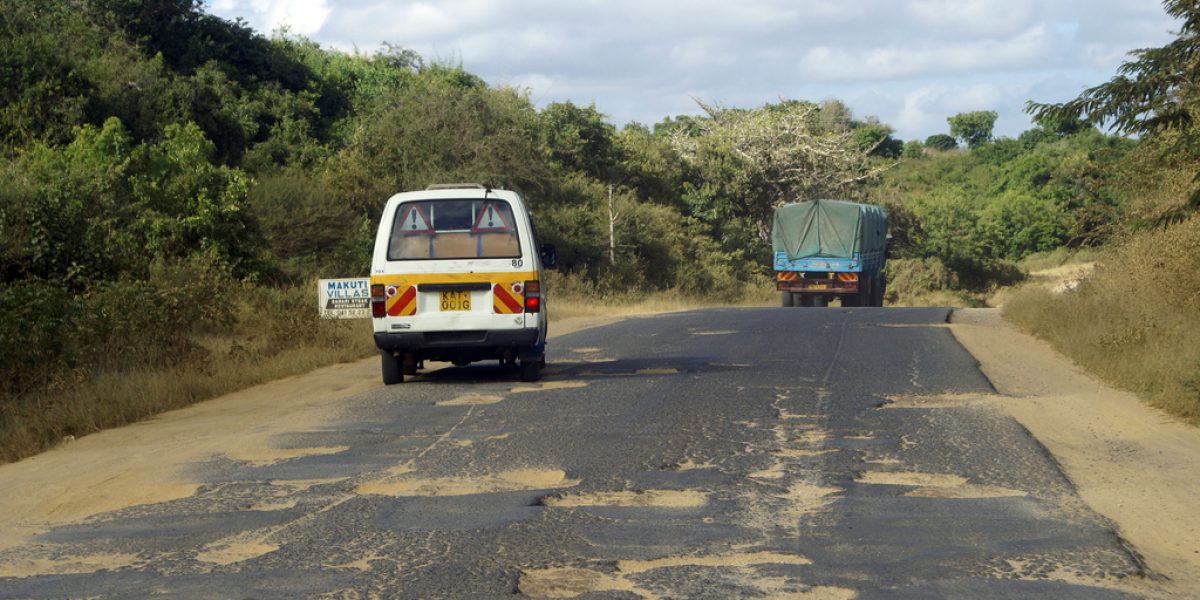Today that road, and many other arterial carriage-ways that stitch together the economic hubs of East Africa, are not so much gleaming ribbons as frayed twine.
Kenya needs about $1 billion to patch, rebuild and repaint its roads, according to official estimates, but the public purse is empty. Left to clean up the mess from its notoriously kleptocratic predecessor, the year-old government of President Mwai Kibaki faces budget crises and can only spare about $1.9 million for roads.
The same situation is true for most countries in Africa. The continent moves 90% of its passengers and commercial freight on tarmac, yet national budgets for road repair and expansion rarely exceed 30% of requirements, according to the World Bank’s Road Maintenance Initiative (RMI). Although most governments impose levies on fuel and vehicles to generate revenues for roads, much of that income gets diverted to other uses.
Africa’s dependency on roads poses a particular challenge for governments trying to bring their priorities in line with aspirations of Nepad. Roads are critical to African commerce, but budget-makers seldom grant public works projects the same urgency as good schools, clean hospitals or muscular militaries.
But the cost of neglect, which includes lost productivity, is high: $1.2 billion a year, according to the World Bank. By the end of the 1980s, Africans had constructed roughly 2 million kilometres of roads costing nearly $150 billion. Nearly a third of that investment has already been lost through lack of maintenance. Restoring just the continent’s most important commercial arteries will cost $1.5 billion annually for at least 10 years, the World Bank estimates.
‘If a road is not maintained periodically or upkeep is delayed for up to three years, it might end up costing six times more to fix it than it normally would,’ said Nazir Alli, CEO of the South African National Roads Agency.
Faced with the imperative of maintaining roads within tight budget constraints, several countries have begun experimenting with alternative approaches to funding.
South Africa, for example, has turned over the daily management of some of its main commercial corridors to the private sector. The company that was awarded a 30-year concession to operate the highway between Maputo, Mozambique’s main port, and Johannesburg bore the costs for extensive reconstruction and collects tolls to cover maintenance and other ongoing costs.
Kenya is also considering toll roads to address its budget limitations and has sought assistance from China to help finance some reconstruction projects.
But this approach has limitations. As Malawi has discovered, not all trade routes are worth tolling. ‘Traffic volumes are very low on the major long-distance routes,’ said Lewis Siwande, a transport economist at Malawi’s National Roads Authority. On the 350km stretch between Lilongwe and Blantyre, the two main cities, traffic volumes average only about 2,000 vehicles a day.
Another approach to saving costs is minimising daily wear and tear. In South Africa, for example, the legal maximum weight that can be carried by a seven- or eight-axle 22-metre long truck is 56 tonnes, with a 5% excess allowance. Transport authorities have caught drivers with loads far higher than the limit. Not only is that unfair competition, it’s expensive. Overloading has already inflicted $13 million in damages on the Johannesburg-Maputo corridor in just five years.
One solution, according to the Pretoria-based Council for Scientific and Industrial Research, is more effective law-enforcement.








